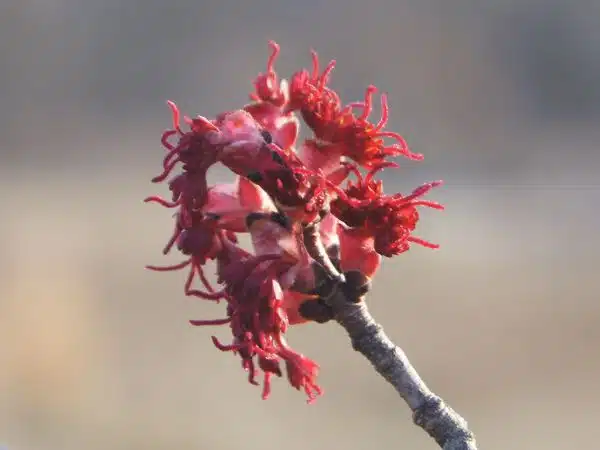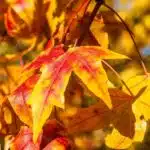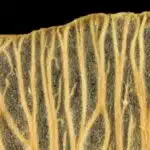The ‘Red Sunset’ maple, also known as Acer rubrum ‘Franksred’, is a beautiful tree that adds color to any landscape. Its dense and rounded crown displays a range of colors throughout the year, from bright green in the spring to deep red in the fall. This cultivar has become very popular among homeowners and landscapers due to its adaptability to various soil types, hardiness, and low-maintenance requirements.
Growing and caring for ‘Red Sunset’ maple requires some knowledge of its specific needs. Proper planting location, soil preparation, watering schedule, and pruning techniques are all essential factors in cultivating a healthy tree. In this article, we will provide detailed information on how to grow and care for this stunning tree species. Whether you are a homeowner looking to add some color to your yard or a professional landscaper seeking guidance on plant selection, this article will provide useful insights into growing and caring for ‘Red Sunset’ maple trees.
Characteristics Of The ‘Red Sunset’ Maple
The ‘Red Sunset’ Maple, also known as Acer rubrum ‘Red Sunset’, is a deciduous tree renowned for its vibrant leaf color during the fall season. This particular cultivar of the red maple species boasts of leaves that turn into a striking mix of scarlet and orange hues, providing an alluring sight to behold. The irony here is that despite being called a “red” maple, the tree’s foliage also includes shades of yellow and green during spring and summer.
When it comes to growth rate, the ‘Red Sunset’ Maple is considered moderately fast-growing. This means that it can reach an average height of 40-60 feet and a spread of 30-40 feet within 20 years. However, the actual growth rate may vary depending on various factors such as soil conditions, sunlight exposure, and overall care provided to the tree.
Overall, the ‘Red Sunset’ Maple is an excellent choice for those who want to add some vibrant autumn colors to their landscape. Its remarkable leaf color coupled with its moderate growth rate makes it ideal for both residential and commercial properties. In the subsequent section about ideal planting locations, we will discuss how to properly care for this tree to ensure its longevity and beauty.
Ideal Planting Location
The ‘Red Sunset’ Maple is a popular deciduous tree known for its vibrant red foliage in the fall. To ensure optimal growth and health of this tree, proper planting location and care are essential. In this section, we will discuss the ideal planting location for the ‘Red Sunset’ Maple.
Planting depth is an important factor to consider when planting a ‘Red Sunset’ Maple. The hole should be twice as wide as the root ball and only as deep as the root ball itself. Planting too deeply can lead to root rot, while planting too shallowly can cause the roots to dry out. It is also important to avoid compacted or poorly drained soil.
Sunlight exposure is another crucial factor for the growth and health of a ‘Red Sunset’ Maple. This tree prefers full sun but can tolerate partial shade. It is important to choose a planting location that receives at least six hours of direct sunlight per day. Too much shade can result in poor growth and fewer leaves with less vibrant fall colors.
In summary, when selecting a planting location for your ‘Red Sunset’ Maple, be sure to consider both planting depth and sunlight exposure. Plant at the appropriate depth and in well-drained soil to prevent root rot, and choose a location that receives sufficient sunlight for optimal growth and vibrant foliage in the fall.
Soil Preparation
Proper soil preparation is crucial in ensuring the successful growth and vitality of ‘Red Sunset’ Maple trees. Before planting, it is recommended to conduct a soil test to determine the pH level of the designated area. This will enable gardeners to make necessary adjustments to ensure that the soil is within the ideal range for these trees, which is between 5.5 and 7.0.
Soil testing can be done using DIY kits or by sending samples to a professional laboratory for analysis. Once results are obtained, amendments may be necessary to adjust pH levels accordingly. The ideal amendment for acidic soil is agricultural lime, while sulfur may be used in alkaline soils. It is important to note that several months should pass before planting after making any adjustments.
In summary, proper soil preparation involves conducting a soil test and adjusting pH levels as needed prior to planting ‘Red Sunset’ Maple trees. By doing so, gardeners can provide their trees with an optimal environment for growth and development that will promote their vitality and longevity. In the subsequent section, we will discuss watering requirements for these trees and how best to ensure adequate moisture levels for optimal growth.
Watering Requirements
Proper watering is essential for the healthy growth of ‘red sunset’ maples. The frequency of watering largely depends on the climate and soil conditions in your area. Generally, during hot and dry weather, you may need to water your tree more frequently than during cooler seasons. As a rule of thumb, young trees require more frequent watering than mature ones. However, it is important to avoid overwatering as it can lead to root rot or other diseases.
To determine how often you should water your ‘red sunset’ maple, check the soil moisture level regularly. You can use a moisture meter or simply stick your finger an inch deep into the soil to feel the moisture content. If the soil feels dry at this depth, it’s time to water. On average, you may need to water your tree once or twice a week during summer and every two weeks during winter.
Overwatering signs include yellowing leaves with brown edges or tips, wilting foliage even when the soil is moist, and a musty smell near the base of the trunk. If you notice any of these symptoms, reduce your watering frequency and make sure that excess water drains away from the tree’s roots properly. It’s also important to avoid planting other vegetation too close to the base of ‘red sunset’ maples as they may compete for water and nutrients.
Moving forward with proper watering techniques will ensure that your ‘red sunset’ maple thrives in its environment. In addition to proper watering frequencies and avoiding overwatering signs, fertilization techniques are crucial for maintaining healthy growth patterns in these trees.
Fertilization Techniques
Red sunset maples require regular fertilization to maintain their health and vibrancy. Fertilizer application should be done in early spring, just as the tree begins to bud. The amount of fertilizer to be applied depends on the age of the tree and its size. A general rule of thumb is one pound of fertilizer for every inch of trunk diameter.
Fertilizer should be spread evenly around the drip line of the tree, which is the area directly beneath the outermost branches. This ensures that the fertilizer is distributed evenly throughout the root zone, where it can be absorbed by the tree’s roots. It is important not to apply too much fertilizer, as this can lead to nutrient deficiencies or even damage to the tree’s roots.
Nutrient deficiencies can manifest in a variety of ways, including yellowing leaves, stunted growth, and decreased vigor. If you notice any signs of nutrient deficiencies in your red sunset maple, it may be time to adjust your fertilizer application. You may need to increase or decrease the amount of fertilizer you are applying, or switch to a different type of fertilizer that better suits your tree’s needs. Regular soil testing can also help you identify specific nutrient deficiencies and adjust your fertilization program accordingly.
Proper fertilization is essential for maintaining the health and beauty of your red sunset maple. However, it is just one aspect of overall tree care. In addition to fertilization techniques, mulching benefits can also help ensure that your maple remains healthy and vibrant for years to come.
Mulching Benefits
When it comes to growing and caring for ‘red sunset’ maple, fertilization techniques play a crucial role in maintaining the tree’s health. However, it is also important to consider other aspects of care, such as mulching. Mulching is an excellent way to provide essential benefits to your ‘red sunset’ maple tree.
Benefits of mulching include retaining moisture in the soil, preventing weed growth, regulating soil temperature, and improving soil fertility. By retaining moisture in the soil, mulch reduces the need for frequent watering and helps your tree withstand dry spells. Mulch also prevents weeds from competing with your tree for nutrients and water while keeping the soil temperature stable throughout the year.
When selecting a type of mulch to use, consider factors such as cost-effectiveness, availability, aesthetic appeal, and effectiveness. Organic mulches like wood chips or shredded leaves are popular choices because they decompose over time and enrich the soil with organic matter. Stone or gravel can be used as an inorganic option that provides good drainage but does not add nutrients to the soil.
Incorporating mulching into your care routine for ‘red sunset’ maple will help ensure its continued health and longevity. The next step is pruning guidelines that will help shape your tree’s growth and maintain its structural integrity over time.
Pruning Guidelines
Pruning Guidelines:
Pruning is an essential part of maintaining the health and beauty of your ‘Red Sunset’ maple tree. Proper pruning techniques help remove damaged, diseased, or dead branches, improve air circulation throughout the canopy, and promote new growth. The best time to prune your maple tree is during its dormant season, which typically occurs in late fall or winter.
When pruning your ‘Red Sunset’ maple tree, it is important to follow certain guidelines to ensure that you do not damage the tree’s health or structure. First, make sure to use sharp pruning equipment that has been sanitized to avoid spreading diseases from one branch to another. Secondly, focus on removing any weak or crossing branches that may cause injury or rubbing against healthy branches. Lastly, avoid over-pruning as this can lead to stress on the tree.
As for maintenance schedule, it is recommended that you prune your ‘Red Sunset’ maple every 2-3 years depending on its growth rate and overall condition. Regular pruning helps maintain the tree’s shape and size while reducing the risk of disease or pest infestation. However, if you notice any signs of insect damage or fungal infection despite regular pruning efforts, it may be necessary to seek professional help from a certified arborist for proper disease and pest control measures.
Transition into subsequent section about ‘disease and pest control’:
While proper pruning techniques can help reduce the risk of disease and pest infestation in your ‘Red Sunset’ maple tree, there are still certain factors beyond our control that may contribute to these issues. Therefore, it is essential to understand how to identify common diseases and pests affecting maple trees and take appropriate measures in addressing them promptly.
Disease And Pest Control
After pruning your ‘red sunset’ maple tree, it’s important to take steps to prevent the onset of diseases and pests that can harm its overall health. With proper care and attention, you can keep your tree healthy and vibrant for years to come. There are many natural remedies available that can help ward off common pests and diseases.
One effective method for controlling pests is to use beneficial insects such as ladybugs or lacewings, which feed on aphids and other harmful insects. You can also make your own insecticidal soap by mixing water, dish soap, and vegetable oil together in a spray bottle. Another natural remedy is neem oil, which has anti-fungal properties that can protect your tree against fungal infections.
If you’re dealing with a serious pest or disease issue that natural remedies won’t solve, it may be time to consult with a professional arborist or horticulturalist. They have access to specialized treatments that can effectively control even the most stubborn pests and diseases. Some professional treatments include systemic insecticides or fungicides, which are absorbed by the tree’s vascular system and offer long-lasting protection against pests and diseases.
As winter approaches, it’s important to take extra care in protecting your ‘red sunset’ maple from harsh weather conditions. This includes wrapping the trunk with burlap or other protective material to prevent damage from frost cracks or sunscald. You’ll also want to continue watering your tree regularly throughout the winter months, as dry conditions can cause stress and damage to the roots. With proper winter care, you can ensure that your ‘red sunset’ maple will thrive year-round.
Winter Care
Winter Care:
As winter approaches, it is important to take measures in protecting your ‘Red Sunset’ maple tree from harsh weather conditions. Winter protection will help ensure that your tree remains healthy and strong for the upcoming growing season.
One of the most effective prevention measures is to add a layer of mulch around the base of the tree. This will help insulate the roots and prevent them from freezing. Additionally, wrapping the trunk with burlap or other protective material can prevent sunscald and damage from ice and snow buildup.
It is also crucial to prune any broken or damaged branches before winter sets in. These branches can become even more brittle with cold temperatures and heavy snowfall, increasing the risk of further damage to your tree. Proper pruning techniques will promote healthy growth and minimize potential hazards during winter storms.
Moving forward with propagation methods, one must first understand how to properly care for their mature ‘Red Sunset’ maple tree before attempting to propagate new ones.
Propagation Methods
Seeding is a method of propagating ‘red sunset’ maples by growing new trees from the seeds of existing trees. Grafting is a propagation method used to create a new ‘red sunset’ maple tree by connecting a cutting from an existing tree to a rootstock. Layering is a propagation technique used to create a new ‘red sunset’ maple tree by burying a stem of an existing tree in the soil and encouraging it to form its own roots. Each of these propagation methods has specific benefits and drawbacks depending on the desired outcome. It is important to have a thorough understanding of each technique in order to ensure success in propagating ‘red sunset’ maples. Proper preparation and care of the tree is essential when propagating a ‘red sunset’ maple.
Seeding
Seeding is one of the most popular propagation methods used to grow ‘Red Sunset’ maple trees. It is a simple and cost-effective way to increase the number of trees in your garden or landscape. Seeding techniques involve planting seeds in soil, which then germinate and produce new plants. However, it is essential to understand the factors that affect germination rates and ensure that you follow the right seeding techniques for optimal results.
Before you begin seeding, it’s important to select high-quality seeds from a reputable source. This ensures that you get seeds with high germination rates, increasing your chances of success. When planting, make sure you use well-draining soil and plant the seeds at the appropriate depth depending on their size. After planting, water the soil regularly to keep it moist but not wet. You should also protect the seedlings from direct sunlight until they are strong enough to handle it.
While seeding is an easy propagation method for ‘Red Sunset’ maples, it requires patience as germination rates can vary depending on various factors such as temperature, moisture levels, and soil quality. Some seeds may take weeks or even months to germinate. Therefore, it’s crucial to monitor your seedlings closely and provide them with adequate care during their early growth stages. With proper seeding techniques and care, you can enjoy beautiful ‘Red Sunset’ maple trees in your garden or landscape for years to come.
Grafting
Another popular propagation method for ‘Red Sunset’ maples is grafting. Grafting involves taking a cutting from the desired tree, called the scion, and attaching it to a rootstock of another tree. This allows the scion to grow and develop with the support of the rootstock’s strong root system. Grafting techniques require careful attention to detail and proper execution to ensure successful growth.
When selecting a rootstock for grafting, it’s crucial to choose one that is compatible with the scion and has desirable growth characteristics such as disease resistance and adaptability to specific soil types. The success of grafting also depends on proper preparation of both the scion and rootstock before joining them together. The cut surfaces must be clean and precise, and special protective materials may need to be applied over the grafted area.
Grafting can produce beautiful, healthy ‘Red Sunset’ maples that exhibit desirable traits such as size, shape, and coloration. However, it requires skill and knowledge beyond what seeding entails. If you’re interested in learning more about grafting techniques or selecting appropriate rootstocks for your ‘Red Sunset’ maple trees, consult with a professional horticulturalist or arborist who can guide you through this process.
Layering
Another propagation method for ‘Red Sunset’ maples is layering. Layering involves bending a lower branch of the desired tree down to the ground and covering it with soil or other rooting medium. This creates a new plant from the parent tree, as the covered branch will form roots and eventually grow into its own separate tree. Layering is a simple and effective way to propagate ‘Red Sunset’ maples without the need for specialized equipment or technical expertise.
Propagation techniques like layering are dependent on root development, which is why proper soil preparation and care are critical for successful growth. The soil around the layered branch must be kept moist but not waterlogged to encourage root development. Once roots have formed, the new plant can be separated from the parent tree by cutting off the branch connecting them.
Layering can produce genetically identical ‘Red Sunset’ maples that exhibit similar characteristics to their parent tree, making it an ideal method for propagating desirable traits such as coloration or size. While layering may take longer than other propagation methods like grafting, it requires less skill and resources, making it accessible to even novice gardeners or homeowners looking to expand their landscaping options.
Overall, propagation methods such as grafting and layering offer diverse options for cultivating ‘Red Sunset’ maples that meet specific preferences or needs. Horticulturalists or arborists can provide guidance on selecting appropriate propagation techniques based on environmental factors such as soil type, light exposure, and climate conditions. By understanding different propagation methods and their advantages, individuals can successfully propagate healthy and vibrant ‘Red Sunset’ maples that enhance their outdoor spaces for years to come.
Transplanting Considerations
Transplanting a ‘red sunset’ maple is like uprooting a piece of your heart and moving it to a new location. Just as we need to prepare ourselves for a major life change, we must also prepare the tree for its new environment. Root pruning is one important step in preparing the tree for transplanting. This process involves cutting some of the roots at least six months before the actual transplanting date. By doing so, the roots will become denser and more fibrous, which increases their ability to absorb water and nutrients.
Timing is another critical factor to consider when transplanting a ‘red sunset’ maple. Early spring or late fall are the best times to move this type of tree because it’s in its dormant phase during these seasons. Transplanting during summer can cause stress on the tree due to excessive heat, while transplanting during winter may lead to root damage from freezing temperatures. It’s also essential to choose a day with overcast skies or light rain since direct sunlight can further stress the tree.
The following table provides an overview of suggested timings for root pruning and transplanting:
| Action | Timing |
|---|---|
| Root Pruning | Six months before transplanting |
| Transplanting | Early spring or late fall |
| Weather Condition | Overcast skies or light rain |
In conclusion, transplanting a ‘red sunset’ maple requires careful preparation and consideration. Root pruning is an essential step that should be done at least six months before transplanting, while timing is critical when choosing when to move the tree. By following these guidelines, you can ensure that your beloved ‘red sunset’ maple will thrive in its new location. In our next section, we will explore some exciting landscaping ideas that can complement this beautiful tree’s colors and enhance your outdoor space.
Landscaping Ideas
When transplanting a ‘red sunset’ maple, there are several considerations to keep in mind. Firstly, it’s best to transplant the tree in the fall or early spring when the soil is moist and temperatures are cooler. This will help minimize stress on the tree and prevent damage to its roots. Secondly, it’s important to choose a location that provides the tree with enough sun, as well as protection from strong winds. Finally, make sure to dig a hole that is deep enough for the root ball and wide enough for future growth.
Outdoor lighting can greatly enhance the aesthetic appeal of a ‘red sunset’ maple tree in your garden design. Lighting can be used to highlight the unique features of the tree such as its bark or foliage, or simply provide an ambient glow that creates a warm and inviting atmosphere in your outdoor space. When designing your garden lighting plan, consider using LED lights as they are energy-efficient and long-lasting.
When caring for your ‘red sunset’ maple, there are several common problems that may arise. One of these is leaf scorch, which occurs when the leaves become dry and brown around the edges due to lack of water or excessive heat. To prevent this issue, make sure to water your tree regularly during hot weather periods and mulch around its base to retain moisture in the soil. Another common problem is aphid infestation, which can cause stunted growth and distorted leaves. To address this issue, use insecticidal soap or neem oil spray on affected areas or introduce natural predators like ladybugs into your garden ecosystem.
As you continue to care for your ‘red sunset’ maple tree, keep in mind these common problems and solutions so that you can maintain its health and beauty year-round.
Common Problems And Solutions
One common problem that ‘Red Sunset’ maple trees face is pest infestation. These pests can include aphids, scale insects, and borers. Aphids are tiny insects that feed on the sap of the tree, which can cause stunted growth and yellowing leaves. Scale insects attach themselves to the bark of the tree and can cause a decline in growth as well. Borers are another type of insect that can bore into the trunk or branches of the tree and cause significant damage.
Another issue that ‘Red Sunset’ maples may encounter is disease. These diseases can include verticillium wilt, tar spot, and anthracnose. Verticillium wilt is a fungal disease that causes wilting and yellowing of the leaves, while tar spot creates black spots on the leaves. Anthracnose is a fungal disease that causes dark spots on the leaves, which can eventually lead to defoliation.
Proper maintenance is key in preventing these issues from occurring or worsening over time. Regular pruning of dead or damaged branches will help prevent pest infestation and reduce stress on the tree. Additionally, keeping proper soil moisture levels and avoiding over-fertilization will also help prevent disease from taking hold. If an issue does arise, timely treatment is crucial in stopping it from spreading further. Consult with a professional arborist or horticulturist for advice on proper treatment methods.
Moving forward to frequently asked questions regarding ‘Red Sunset’ maple trees: …
Frequently Asked Questions
Common issues that may arise when growing and caring for ‘red sunset’ maple include leaf scorch, root rot, and aphid infestation. Leaf scorch is caused by hot, dry weather or excessive exposure to sunlight. To prevent this issue, it is important to plant the tree in a location that provides partial shade during the hottest parts of the day. Root rot can occur if the soil around the tree becomes waterlogged. This can be prevented by ensuring proper drainage and not overwatering the tree. Aphids are small insects that feed on the sap of leaves and can cause damage to the foliage. They can be controlled through regular monitoring and application of an insecticidal soap.
When it comes to maintenance practices for ‘red sunset’ maple, regular pruning is necessary to maintain its shape and improve its overall health. Pruning should be done during the dormant season, typically in late winter or early spring before new growth appears. Propagation methods for this tree include both seed propagation and cutting propagation. Seed propagation involves collecting seeds from mature trees and planting them in a suitable growing medium while cutting propagation involves taking cuttings from an existing tree and rooting them in moist soil or water.
Soil management is crucial for optimal growth of ‘red sunset’ maple. It prefers well-drained soils with a pH range between 6.0-7.5. Fertilization should be done annually using a balanced fertilizer with equal amounts of nitrogen, phosphorus, and potassium. Pest and disease control measures should also be taken regularly through use of appropriate pesticides or fungicides as needed.
Table: Ideal Growing Conditions
| Condition | Description |
|---|---|
| Sun Exposure | Partial shade preferred |
| Soil Type | Well-drained soils |
| pH Range | 6.0-7.5 |
| Fertilization | Balanced fertilizer annually |
Winter care involves protecting the tree from cold temperatures, strong winds, and heavy snow or ice. Mulching around the base of the tree can help to insulate its roots and prevent freezing. Additionally, pruning dead or damaged branches before winter can help to prevent them from breaking under the weight of snow or ice. Landscaping ideas for ‘red sunset’ maple include using it as a focal point in a garden bed or as a shade tree in a larger landscape design.
In conclusion, growing and caring for ‘red sunset’ maple requires attention to ideal growing conditions, regular maintenance practices, and proactive pest and disease control measures. With proper care, this tree can thrive and provide beauty and shade for many years to come.
Conclusion: Growing And Caring For ‘Red Sunset’ Maple
Growing and caring for ‘Red Sunset’ Maple can be a rewarding experience for any gardener or horticulturalist. This tree is known for its stunning red foliage in the fall, making it a popular choice among landscapers and homeowners alike. To ensure that your ‘Red Sunset’ Maple thrives, there are some tips and tricks to keep in mind.
Firstly, location is key when planting a ‘Red Sunset’ Maple. It should be planted in an area with well-draining soil and full sun to partial shade. The tree should also have enough space to grow, as it can reach up to 50 feet tall and 40 feet wide at maturity. Additionally, regular watering during the first few years of growth will help establish healthy roots.
Secondly, pruning is important to maintain the shape and health of the tree. Pruning should be done during the dormant season (late fall or winter) to avoid sap bleeding from cut branches. When pruning, remove any dead or diseased branches, as well as any crossing or rubbing branches that may damage each other. It’s important not to over-prune, as this can cause stress on the tree.
In conclusion, growing and caring for ‘Red Sunset’ Maple requires careful consideration of its location and regular maintenance through proper pruning techniques. With these tips and tricks in mind, you can enjoy a beautiful and healthy ‘Red Sunset’ Maple in your landscape for years to come. Remember to always prioritize the health of your plants by providing them with optimal growing conditions and necessary care.
Frequently Asked Questions
How Tall Can A ‘Red Sunset’ Maple Grow?
The ‘Red Sunset’ maple is a popular choice among homeowners and landscape professionals alike. This tree is known for its stunning fall color, which ranges from bright orange to deep red. When it comes to growth rate, the ‘Red Sunset’ maple can reach heights of 40-50 feet with a spread of 25-35 feet in just a few decades. To maintain its size and shape, pruning techniques should be employed during the dormant season. As a horticulturalist or arborist, it’s important to educate clients on proper pruning methods to ensure the longevity and health of their ‘Red Sunset’ maple. With its impressive growth rate and beautiful fall foliage, this tree is sure to add value and curb appeal to any property.
Can The ‘Red Sunset’ Maple Thrive In A Hot And Humid Climate?
The ‘Red Sunset’ Maple is a popular tree species that is known for its vibrant foliage and ability to withstand harsh weather conditions. When it comes to growing this tree in hot and humid climates, the key is to provide it with the best soil possible. The ideal soil for ‘Red Sunset’ Maples should be well-draining, loamy, and slightly acidic. Additionally, effective watering techniques are crucial for maintaining healthy growth. It is recommended to water deeply but infrequently, making sure that the soil stays moist but not waterlogged. By following these guidelines and ensuring that the tree receives ample sunlight, adequate nutrients, and proper care, the ‘Red Sunset’ Maple can thrive in hot and humid climates just as well as it does in cooler regions.
How Often Should The Tree Be Inspected For Pests And Diseases?
As a horticulturalist or arborist, it is recommended to conduct regular inspections on trees for pest prevention and disease management. The frequency of inspections may vary depending on the climate, location, and overall health of the tree. However, as a general rule of thumb, it is advisable to inspect the ‘Red Sunset’ Maple at least once a year, preferably during early spring or fall when pests and diseases are most active. During the inspection, pay close attention to any signs of infestation or damage from common pests such as aphids, spider mites or scale insects. Additionally, keep an eye out for symptoms of fungal infections like leaf spots or wilting leaves. Early detection and prompt action can help prevent further damage and maintain the overall health of the tree.
Is It Necessary To Stake A Young ‘Red Sunset’ Maple?
When considering whether or not to stake a young ‘Red Sunset’ Maple, it’s important to weigh the benefits of staking against the potential drawbacks. While staking can provide support for the tree and prevent damage from high winds, it can also limit root development and lead to weaker trunk growth over time. As an alternative to staking, planting in a sheltered location or providing windbreaks can often achieve the same goal without impeding natural growth patterns. Ultimately, the decision to stake should be made on a case-by-case basis depending on factors such as site conditions and tree health.
What Is The Average Lifespan Of A ‘Red Sunset’ Maple?
The average lifespan expectancy of a ‘Red Sunset’ maple tree is approximately 80 years, with some specimens living up to 100 years. However, this estimate can be influenced by various environmental factors such as soil quality, watering habits, and exposure to disease or pests. As a horticulturalist or arborist, it is essential to understand the optimal growing conditions for this species and to implement a proactive maintenance plan that includes regular pruning and fertilizing to extend its lifespan. While the longevity of a ‘Red Sunset’ maple tree may vary based on external factors beyond our control, proper care and attention can help ensure that it thrives for decades to come.
Conclusion
The ‘Red Sunset’ Maple is a majestic tree that can grow up to 40 feet tall with a spread of 25 feet. It boasts stunning red foliage in the fall, making it a popular choice for landscaping. While it prefers cooler temperatures, it can still thrive in hot and humid climates with proper care and maintenance.
Inspecting the ‘Red Sunset’ Maple regularly for pests and diseases is crucial to its health. Staking may also be necessary for young trees to ensure proper growth and stability. With proper care and attention, the average lifespan of a ‘Red Sunset’ Maple can be around 80 years.
In conclusion, the ‘Red Sunset’ Maple is a magnificent addition to any landscape. Its splendid red foliage brings joy to any beholder. As horticulturalists or arborists, we must ensure its longevity by inspecting regularly for pests and diseases, providing adequate support when necessary, and maintaining optimal growing conditions. Let us continue to cultivate these beautiful trees for generations to come.
Image Credits
- “Acer rubrum ‘Franksred’, Red Sunset Red Maple 2008-028-A” by Tie Guy II (featured)





























